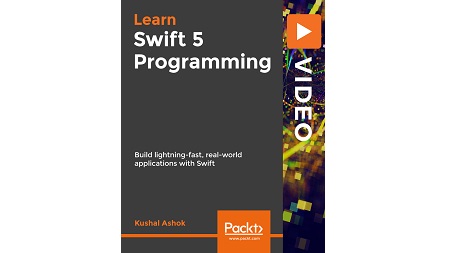
English | MP4 | AVC 1920×1080 | AAC 48KHz 2ch | 3h 25m | 710 MB
Build modern, high-performance, real-world apps with Swift by leveraging its playground and XCode
Swift is a powerful programming language that is fun as the syntax is concise yet expressive and feature-rich.
This course helps you take your first steps into programming for Apple devices with Swift. You’ll quickly learn Swift and the new features introduced in its latest version. You’ll design user interfaces using the UIKit and unleash the power of Storyboards with AutoLayout. You’ll use the CoreLocation framework to determine a device’s geographic location, altitude, and orientation.
This course lets you explore the most important development tools and techniques used to develop real-world iOS apps while giving you insights into how to improve performance using the latest version of Swift. Finally, you’ll learn how to write UI tests for your applications to manage performance and then submit your app to the App Store.
By the end of this course, you will have gotten started as a Swift programmer and will be able to build your own apps.
Learn
- Develop a fully functional sample app from scratch using Xcode
- Discover the Swift 5 basics and get familiar with its coding principles and syntax
- Design an app using UIKit elements and discover the power of Storyboards with AutoLayout
- Make web service calls and parse JSON responses
- Learn how to use the CoreLocation framework, go through Apple’s documentation, and make use of other frameworks in the future
- Write UI Tests for your applications to achieve good code coverage and automate some testing processes
Table of Contents
Getting Started with Swift
1 Course Overview
2 Setting Up the Development Environment
3 Simple Data Types in Swift
4 Using Optionals in Swift
5 Working with Arrays, Dictionaries, Sets, and Enums
6 Functions and Closures
7 Using Structs and Classes
8 Implementing Protocols and Extensions
Designing the User Interface
9 Understanding MVC Design Pattern
10 Understanding UIKit
11 Using Auto Layout in Xcode
12 Adding Views to Storyboard with Constraints
13 Creating a UITableView with Delegate and DataSource
Integrating Web Service Calls and JSON Parsing
14 Discovering How to Make a Web Service Call
15 Parsing JSON Response
16 Displaying Response Data on UI
17 Adding Loading Indicators
18 Adding Alerts in Your Application
Using CoreLocation Framework
19 Understanding CoreLocation
20 Get User’s Location
21 Updating info.plist
22 Using CLGeocoder
23 Error Handling
24 Efficiency Management
Debugging and Troubleshooting
25 Add, Disable, or Delete breakpoints
26 Edit a breakpoint to add actions
27 Understanding Debug Bar
28 Understanding Variables View
29 Using LLDB Debugger
30 Troubleshooting Examples
UI Testing
31 Record a UITest
32 Adding Identifiers for UITests
33 Finding Objects for UITest
34 Using XCTAssert for Custom Assertions
35 Checking Code Coverage
Submission to the App Store
36 Creating an App Icon
37 Prepare App Screenshots
38 Prepare Privacy Policy
39 Uploading the Build
40 Submitting with App Review Information
41 Course Summary
Resolve the captcha to access the links!